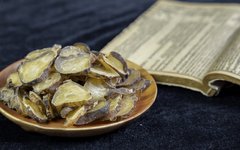Fu Zi (Aconite) , Rou Gui (Cinnamon), Gan Jiang (Dried Ginger), Wu Yao (Evodia), and Chuan Jiao (Sichuan Pepper) are all warming herbs, but Fu Zi assists Yang to move rather than to stay; Gan Jiang disperses cold, warms Yang, and opens the meridians to guide Fu Zi into the kidneys, thus returning Yang and dispelling cold; Rou Gui helps Yang to stay rather than to move; Wu Yao soothes the liver and warms the kidneys, guiding heat downward, regulating menstruation, and treating hernias. It can be seen that all are warming herbs, yet their properties and functions differ, and when combined in formulas, they undergo various changes. Therefore, in clinical practice, it is essential to distinguish clearly and select appropriately to achieve life-saving effects. The five herbs are described as follows.
01 Fu Zi
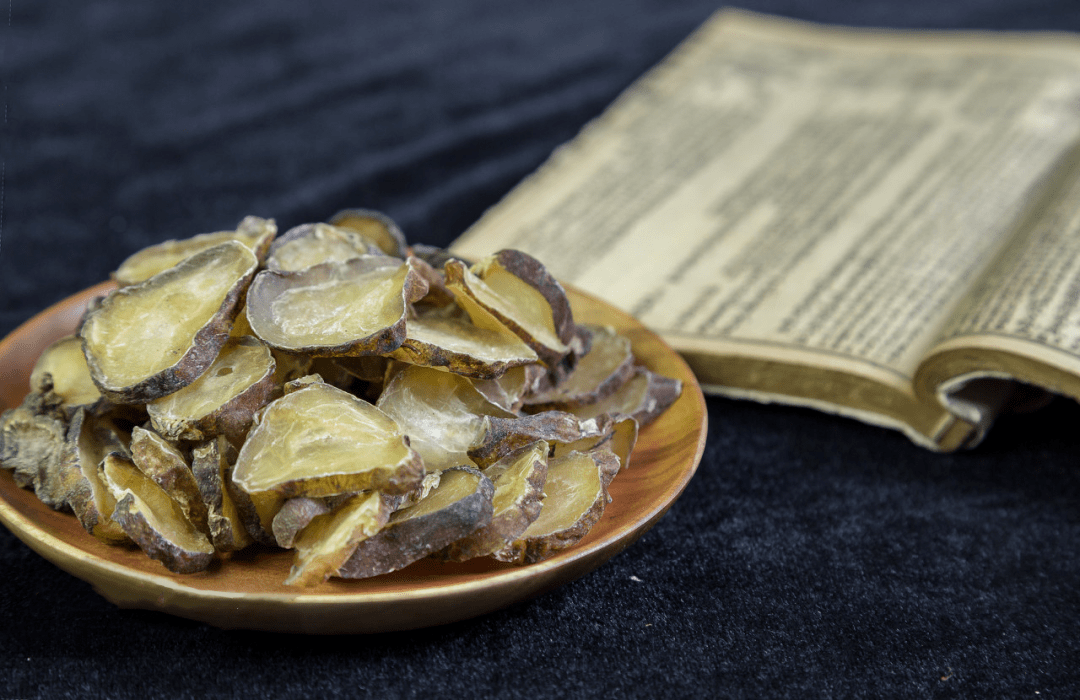
Fu Zi has a spicy and sweet flavor, is warming, and is toxic. The best quality comes from Sichuan, hence it is also known as “Chuan Fu Zi”. It has the effects of reviving Yang, dispelling cold, drying dampness, and warming kidney Yang. Its nature is to move rather than to stay, capable of reaching inward, penetrating outward, ascending, and descending. It can open, pass through, warm, and disperse all forms of persistent cold (“persistent cold” refers to cold qi that has long been lodged in a specific meridian or organ, forming localized cold syndromes that are difficult to cure, often seen in patients with spleen and stomach deficiency and internal cold or dampness). It can treat blockages in the organs, muscles, meridians, and blood vessels; in cases where Yang qi is about to collapse, with cold limbs, profuse cold sweat, or sweat like oil, it can revive Yang and save the patient from danger.
1. Reviving Yang and Saving from Collapse: This is indicated in cases of Yang deficiency due to heart and kidney Yang deficiency or after severe vomiting, diarrhea, or sweating, leading to symptoms such as weak pulse, cold limbs, and cold sweat. Fu Zi (9-15g) can be urgently used to revive Yang and dispel cold, invigorating the body’s Yang qi and enhancing vitality. It is often combined with Gan Jiang (9g) and roasted licorice (6g), known as Si Ni Tang, or with Ren Shen (9-30g), known as Shen Fu Tang, to revive Yang and save from collapse. Generally, Si Ni Tang is used for internal cold; Shen Fu Tang is used for both Qi and blood deficiency; if there is profuse sweating, Mai Dong and Wu Wei Zi can be added (9g each). I often use this herb to rescue various types of shock, usually combined with Ren Shen, Mai Dong, and Wu Wei Zi, achieving ideal results. If oral administration is not possible, it can be given via nasal feeding, and attention should be paid to “differentiation of syndromes” during shock treatment.
2. Dispelling Cold and Drying Dampness: In cases where wind, cold, and dampness invade the body, causing stagnation of Qi and blood, leading to joint and muscle pain, numbness, heaviness, and difficulty in bending the knees and elbows, especially in rainy weather when pain worsens, Fu Zi can be used to dispel cold and dry dampness. It is often combined with Qiang Huo, Du Huo, Wei Ling Xian, Sang Ji Sheng, Qin Jiao, Chi Shao, roasted mountain turtle shell, pine resin, Cang Zhu, and Dang Gui. If the spleen is invaded by cold, leading to abdominal pain, diarrhea, and cold hands and feet, Fu Zi can also be used to dispel cold and dry dampness, often combined with Gan Jiang, Bai Zhu, Dang Shen, Fu Ling, and roasted licorice.
3. Warming and Assisting Kidney Yang: Kidney Yang deficiency can manifest as reproductive dysfunction, with men experiencing impotence and women suffering from cold womb and infertility. This herb can tonify the kidneys and assist Yang, enhancing reproductive function, often combined with Lu Jiao Jiao, Shu Di, Rou Gui, Tu Si Zi, Gou Qi Zi, Dang Gui, Ba Ji Tian, Sheng Ai Ye, Yang Qi Shi, and Fu Ling. Traditional Chinese medicine believes that kidney Yang is the “original Yang” of the human body, the driving force behind all life activities, thus warming and assisting kidney Yang also implies tonifying original Yang. It can be used for symptoms caused by kidney Yang deficiency, such as cold pain in the lower back and knees, impotence with cold essence, abdominal pain, frequent urination at night, cold feet and soft knees, poor appetite, early morning diarrhea, fatigue, and fear of cold, with a weak pulse at the right wrist. When used to tonify kidney Yang, it is often combined with Shu Di, Shan Yao, Rou Gui, etc. For example, Ba Wei Di Huang Wan (Shu Di, Shan Yao, Shan Yao, Dan Pi, Fu Ling, Ze Xie, Fu Zi, Rou Gui) and You Gui Yin (Shu Di, Shan Yao, Gou Qi, Du Zhong, Fu Zi, Rou Gui, Gan Cao) are commonly used.
Modern research reports that Fu Zi has a cardiotonic effect. Rou Gui assists kidney Yang, warms the lower burner, and can guide the upward floating fire back down to the kidneys, returning fire to the source. Fu Zi revives Yang qi, circulates through the twelve meridians, and can restore the lost original Yang (kidney Yang). Bai Fu Zi is another variety, white in color and smaller in size, thus named Bai Fu Zi, with a tendency to ascend, capable of dispelling wind and drying phlegm, mainly used for head and facial wind-phlegm diseases, such as Bell’s palsy (facial nerve paralysis, with mouth and eyes skewed). Chuan Fu Zi revives Yang and dispels cold, and can assist kidney Yang. Bai Fu Zi does not have the effect of assisting kidney Yang. Fu Zi can be categorized based on processing methods into Pao Fu Zi, Dan Fu Pian, Hei (Wu) Fu Pian, and Bai Fu Pian, with therapeutic effects being roughly similar. If further categorized, Pao Fu Zi (also known as Hei Fu Pian) is the most commonly used, with strong potency and quick effects; Dan Fu Pian (also known as Bai Fu Pian) has a milder potency. There is also Chuan Wu, which is the same plant as Fu Zi, with similar properties and functions, and is not separated in pharmacies today. Ancients believed that Fu Zi is used to warm the kidneys and assist Yang, while Chuan Wu is used to open blockages and dispel wind. Fu Zi is often combined with Ren Shen and Shan Yao to treat sweating and loss of Yang; combined with Shu Di and Dang Gui, it can enhance blood production; combined with Rou Gui, it can tonify kidney Yang; combined with Gui Zhi, Bai Shao, and Huang Qi Pi, it can treat Yang deficiency and spontaneous sweating. The usual dosage is 1.5-9g. It is contraindicated in cases of non-deficient cold syndromes and cold dampness syndromes, and can be fatal if heat enters the throat. Pregnant women should avoid it. It should generally not be used with Ban Xia, Gua Lou, Bei Mu, Bai Ji, or Bai Lian.
02 Gan Jiang

Gan Jiang has a spicy flavor, is warming, and its main functions are to warm the middle, disperse cold, and open the meridians. It can guide blood-invigorating herbs into the blood and Qi, and lead Fu Zi into the kidneys to dispel cold and revive Yang; it can also warm and assist the Yang qi of the heart and lungs.
It is commonly used in the following situations.
1. Abdominal Pain and Diarrhea: Due to spleen and stomach deficiency and cold, cold pathogens affect the spleen and stomach’s ability to transform and transport, leading to cold pain in the epigastrium and abdomen, preference for warmth and pressure, or vomiting or diarrhea with clear and watery stools. Gan Jiang can be used to warm the middle and disperse cold, often combined with Dang Shen, Bai Zhu, roasted licorice, Huo Xiang, Wu Yao, Fu Ling, and Chen Pi. If there is cold pain in the chest and abdomen, severe cold, vomiting with inability to eat, and cold qi rising in the abdomen causing pain, it can be combined with Chuan Jiao, Ren Shen (Dang Shen), and maltose (Da Jian Zhong Tang).
2. Yang Collapse: Individuals with weak Yang and low resistance, when encountering excessive cold pathogens that invade the organs, may present with weak pulse, cold limbs, profuse cold sweat, clear diarrhea, and undigested food. Or, excessive use of dispersing herbs leading to profuse sweating can cause cold limbs and low body temperature, indicating cold pathogens injuring Yang or excessive sweating leading to Yang qi collapse. Gan Jiang can be urgently used to revive Yang and open the meridians, often combined with Fu Zi and licorice (Si Ni Tang). For weak individuals or the elderly, Dang Shen (or Ren Shen) can be added, and if cold sweat persists, Mai Dong, Wu Wei Zi, and Shan Yao can also be added.
3. Cold Phlegm Cough and Wheezing: Due to Yang deficiency, water and dampness are not transformed, accumulating into phlegm, which can rise to the lungs causing cough, with white, watery, foamy sputum, wheezing, fear of cold, dizziness, and aversion to drinking water, especially in winter. This herb can be combined with Xi Xin and Wu Wei Zi, known as the “Ginger and Xi” method, which has the effect of warming the lungs, opening the lungs, and harmonizing the lungs, often added to appropriate decoctions, such as Xiao Qing Long Tang. Xie Bai is spicy and warm, entering the heart meridian, unblocking Qi stagnation, assisting heart Yang to treat chest obstruction (pain in the heart, chest, and back); Gan Jiang is spicy and warm, entering the spleen meridian, also entering the heart and lungs, assisting Yang and tonifying heart Qi; Pao Jiang charcoal is mainly used to warm the meridians and stop bleeding, particularly for cold in the lower abdomen, spleen, and kidneys. Gan Jiang is mainly used for cold in the stomach, navel, and heart and lungs. The usual dosage is 0.9-6g, and Pao Jiang charcoal is used at 0.6-3g. It is not suitable for those with insufficient essence and internal heat pathogens.
03 Rou Gui
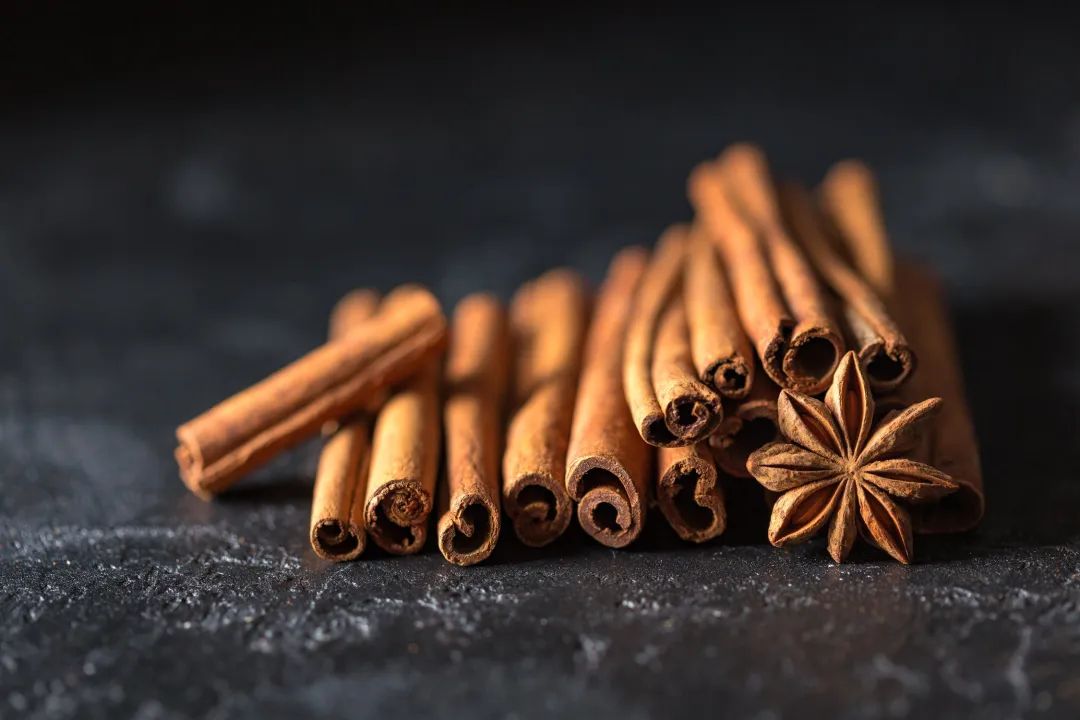
Rou Gui has a spicy and sweet flavor, is warming, and has the effects of warming and tonifying kidney Yang, warming the middle, and promoting blood circulation. Its nature is to stay rather than to move, warming the lower burner, assisting the Yang qi in the kidneys, known as the “fire of life gate”, and can also guide Qi back to the kidneys and return fire to the source.
1. Warming and Tonifying Kidney Yang: Insufficient kidney Yang can lead to male impotence, cold essence, and women experiencing infertility. Men often combine it with Lu Rong, Shu Di, Tu Si Zi, Gou Qi Zi, Tong Ji Li, Shan Yao, Fu Zi, Rou Cong Rong, Ba Ji Tian, and Bai Yao; women often combine it with Dang Gui, Shu Di, Bai Shao, Chuan Xiong, Xiang Fu, Sheng Ai Ye, Fu Zi, Zi Shi Ying, Wu Yao, and Wu Yao. Kidney Yang deficiency can also lead to urinary difficulties and even edema, which can be treated with this herb combined with Shu Di, Shan Yao, Niu Xi, Shan Yao, Fu Ling, Dan Pi, Ze Xie, Fu Zi, and Che Qian Zi (Ji Sheng Shen Qi Wan).
2. Warming the Middle and Dispelling Cold: For abdominal pain, bloating, lower abdominal cold pain, cold hernia, and dysmenorrhea caused by cold air, this herb can be combined with Gao Liang Jiang, Xiang Fu, Wu Yao, Xiao Hui Xiang, Wu Yao, Ding Xiang, and Chen Xiang. Spleen and kidney Yang deficiency affecting the middle burner can lead to cold diarrhea, with clear and watery stools, or even undigested food, which can be treated with this herb combined with Dang Shen, Bai Zhu, Fu Ling, roasted licorice, Gan Jiang, Fu Zi, Bu Guo Zhi, Rou Dou Kou, He Zi, and Wu Wei Zi. I often use this herb combined with Fu Zi, Dang Shen, Bai Zhu, Fu Ling, Mu Xiang, Bu Guo Zhi, Wu Zhu Yu, Rou Dou Kou, Wu Wei Zi, He Zi, roasted Shan Yao, and Zao Xin Tu (using this decoction to cook the herbs) for treating chronic dysentery and chronic enteritis, especially in cases of cold diarrhea, achieving certain effects, for reference. Modern research indicates that the volatile oils contained in this herb have a mild stimulating effect, enhancing digestive function, expelling gas from the digestive tract, and alleviating gastrointestinal spasmodic pain.
3. Promoting Blood Circulation: Blood flows in the vessels; cold causes stagnation, while warmth promotes circulation. If Qi and blood are weak, cold pathogens obstruct circulation, leading to yin sores, or cold and painful fingers and toes, or black and rotten finger joints, or even necrosis of the toes (necrotizing fasciitis, modernly referred to as obstructive vascular inflammation), this herb can be used to warm and promote blood circulation, often combined with Shu Di, Ma Huang (crushed), Bai Jie Zi, Lu Jiao Jiao, Fu Pian, Hong Hua, Gan Jiang, Xi Xin, and Gui Zhi tips. For individuals with weak Qi and blood, if sores and abscesses do not heal after a long time, this herb can also be combined with Dang Shen, Huang Qi, Bai Zhu, Fu Ling, Dang Gui, Bai Shao, Chuan Xiong, Shu Di, roasted licorice (Shi Quan Da Bu Tang). Modern research indicates that this herb has central and peripheral vasodilatory effects, enhancing blood circulation.
4. Guiding Fire Back to the Source: Kidney Yang deficiency and insufficient true fire at the life gate can lead to false heat symptoms, such as flushed face, shortness of breath, profuse sweating, cold feet and knees, weak pulse, and weak pulse at the wrist. This is a true cold-false heat syndrome, requiring prompt use of good Rou Gui to guide fire back to the source, returning Qi to the kidneys, often combined with Shu Di, Shan Yao, Wu Wei Zi, Ren Shen, Fu Zi, calcined dragon bone, and calcined oyster. If kidney fire rises, leading to upper heat (dry mouth, sore throat, toothache, not red or swollen, worsening at night, pain radiating to the teeth and cheeks) and lower cold (lower back pain, cold legs and feet, loose stools, weak pulse), this herb can also be used to guide fire back to the source, often combined with Xuan Shen, Chuan Duan, Niu Xi, Shu Di, Zhi Mu, Xi Xin, and Sang Ji Sheng, using Rou Gui at 0.9-2.5g.
Fu Zi acts quickly and intensely, capable of reviving the Yang qi that is about to be lost in cold syndromes, hence it is said to “save the Yang within the Yin”. Rou Gui’s effects are gentle and profound, capable of tonifying the true fire that is insufficient in the lower burner, warming and tonifying kidney Yang, and guiding fire back to the source to extinguish rootless fire, hence it is said to “save the Yang within the Yang”. Fu Zi is often used in emergency situations, while Rou Gui is often used in tonifying formulas. Gan Jiang warms the middle and dispels cold, mainly entering the spleen meridian and Qi level, reviving Yang and opening the meridians, while Rou Gui warms the middle and dispels cold, mainly entering the kidney meridian and blood level, suppressing liver and supporting spleen. High-quality Rou Gui with strong potency is called “Zi You Gui”; the outer rough bark and inner thin bark removed is called “Gui Xin”, which is not too drying and suitable for assisting heart Yang and connecting heart and kidney; young cinnamon bark is called “Guan Gui”, which is weak and drying, suitable for warming the middle and drying dampness. Generally referred to as Rou Gui; the full name of Zi Rou Gui is Zi You Rou Gui. I often add Rou Gui (preferably Zi You Gui) at 0.9-2g to Liu Wei Di Huang Tang (Shu Di 60g or Sheng Shu Di 30g each, Shan Yao 60g, Shan Yao 9g, Fu Ling 9g, Dan Pi 9g, Ze Xie 6g), simmering in one to two warm bottles, cooling, and using as tea. This is used for treating diabetes with thirst; when thirsty, drink this water, symptoms gradually alleviate, and water intake decreases, and the decoction also gradually decreases until it is similar to that of normal individuals, then switch to taking decoctions daily, often achieving good results, for reference (sometimes adding Wu Wei Zi 6-9g). The usual dosage of Rou Gui is 0.6-4.5g; in special severe cases, it can be used at 9-15g. It is contraindicated in cases of Yin deficiency with excessive fire, heat diseases injuring fluids, and should not be used by pregnant women. It should not be used with Shi Zhi.
04 Wu Yao
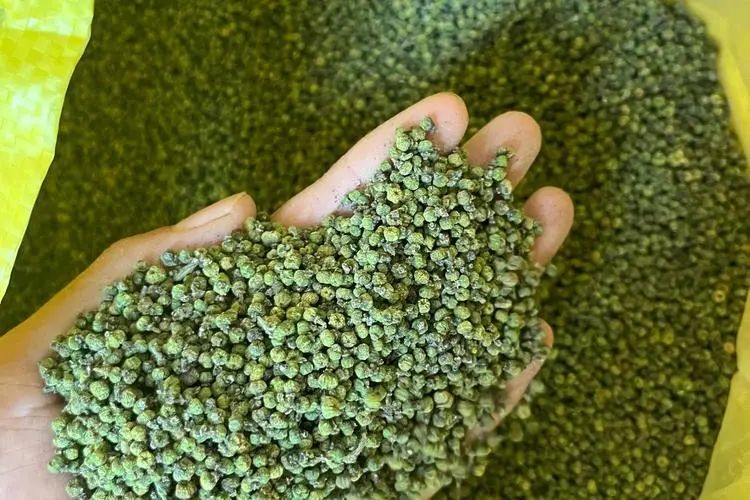
Wu Yao has a spicy and bitter flavor, is warming, and has the effects of warming the stomach, dispersing cold, soothing the liver, drying the spleen, and warming the kidneys to treat hernias.
It is commonly used to treat:
1. Stomach Pain and Acid Reflux: Cold pain in the stomach, acid reflux, vomiting, and fullness in the chest can be treated with Wu Yao to warm the stomach, disperse cold, and stop vomiting. It is often combined with Sheng Jiang, Ban Xia, Gao Liang Jiang, Huo Xiang, and Sha Ren. If liver Qi stagnation transforms into heat, causing liver heat to invade the stomach leading to acid reflux and stomach pain, this herb can be combined with Huang Lian (with Huang Lian’s dosage being five times that of Wu Yao), known as Zuo Jin Wan.
2. Spleen and Kidney Deficiency Diarrhea: Diarrhea caused by spleen and kidney deficiency and cold is mainly characterized by abdominal rumbling and pain at dawn, leading to immediate bowel movements, or accompanied by cold legs and lower back pain, with a preference for warmth in the abdomen. This herb, being spicy and warming, can disperse cold in the lower abdomen, often combined with Bu Guo Zhi, Wu Wei Zi, and Rou Dou Kou (Si Shen Wan).
Using these four herbs as the main ingredients, along with appropriate symptomatic herbs, can yield effective results. I often use the Si Shen Wan formula combined with roasted Bai Zhu, Fu Ling, Dang Shen, Mu Xiang, roasted Bai Shao, Bing Lang, roasted Huang Bai, and Zao Xin Tu (using this decoction to cook the herbs) for treating chronic enteritis and intestinal dysfunction, achieving certain therapeutic effects, for reference.
3. Hernia Pain: Hernia pain and testicular pain caused by cold Qi in the liver and kidneys can be treated with this herb combined with Wu Yao, Qing Pi, Chuan Lian Zi, Ju Zi, Xiao Hui Xiang, Rou Gui, and Li Zhi He. 4. Dysmenorrhea: Cold in the uterus leading to delayed menstruation, with dark and scanty blood, and abdominal pain during menstruation can be treated with this herb combined with Chuan Xiong, Dang Gui, Hong Hua, Tao Ren, Xiang Fu, Xiao Hui Xiang, Niu Xi, Shu Di, and Rou Gui. Modern research indicates that this herb has the effect of contracting the uterus. Ban Xia stops vomiting due to disharmony in the stomach Qi and dampness in the middle burner; Wu Yao stops vomiting due to spleen and stomach deficiency and Qi stagnation, and Wu Yao also has the characteristic of treating Jue Yin headache (headache at the top, vomiting saliva).
Chuan Jiao is mainly used for treating weak kidney fire and cold Qi in the kidney meridian; Wu Yao is mainly used for treating stagnant Yin that does not descend, liver meridian Qi stagnation, and can guide heat downward, useful for treating false heat in the mouth and tongue. Shan Yao nourishes the Yin of the Jue Yin (liver meridian), warms the liver, tonifies the kidneys, and stops spontaneous sweating; Wu Yao opens the Qi stagnation of the Jue Yin, warms the liver, and tonifies the spleen, guiding the Qi downward. The usual dosage is 0.9-6g; in special severe cases, it can be used at 9g. It is contraindicated in cases of dryness and heat.
05 Chuan Jiao
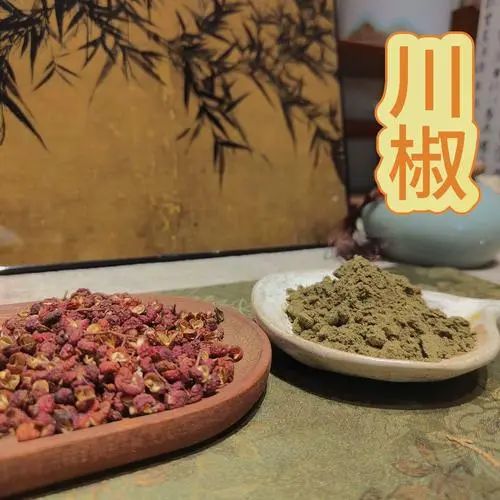
Chuan Jiao has a spicy flavor, is warming, and has the effects of warming the middle, dispelling cold, guiding Qi downward, and killing parasites. For stomach pain, abdominal pain, and cold Qi causing bloating, it can be combined with Gan Jiang, Dang Shen (Ren Shen), maltose (Da Jian Zhong Tang), Gao Liang Jiang, and Xiang Fu.
According to animal experiments, the volatile oils contained in this herb enhance peristalsis in small amounts, while large amounts inhibit it. Chuan Jiao can be combined with Bi Ba, Fu Pian, Qiang Huo, Du Huo, and Cao Wu for external application to treat joint pain.
For abdominal pain and vomiting caused by roundworms, this herb can be combined with Wu Mei, Huang Lian, Huang Bai, Xi Xin, Gui Zhi, Fu Zi, Gan Jiang, and Dang Gui (Wu Mei Wan). This herb can be decocted for external washing to treat skin eczema and rheumatic pain in the limbs. Note: “Chuan Jiao Mu”: Jiao Mu has a spicy and bitter flavor, is cold in nature.
It enters the kidneys, promotes urination, reduces edema, and eliminates water retention. It is often combined with Fu Ling Pi, Da Fu Pi, Bing Lang, Chi Xiao Dou, Ze Xie, and Mu Tong. I have used the “Jiao Mu Gua Lou Tang” (from “Yi Chun Sheng Yi”) with appropriate adjustments to treat several cases of exudative pleurisy and pleural effusion, achieving good results. My common prescription is as follows: Chuan Jiao Mu 9g, whole Gua Lou 30g, Sang Bai Pi 12g, Ting Li Zi 9g, Ze Xie 12g, Zhu Ling 15g, Fu Ling 15g, Che Qian Zi 12g (in a cloth bag), Xing Ren 9g, Bai Ji Li 9g, Zhi Qiao 9g, Dong Gua Pi 30g, Gui Zhi 4.5g, with adjustments as needed. For reference, the usual dosage is 1.5-4.5g. The dosage of Chuan Jiao Mu can be slightly larger. It is contraindicated in cases of Yin deficiency with excessive fire.
Note: This article is excerpted from “Learning Clinical Practice from Famous Teachers – Jiao Shude”

Note:This account aims to spread traditional Chinese medicine culture. The TCM knowledge mentioned in the text is for learning and communication purposes only.
WeChat has been updated! If youneither★starred me, nor liked or “looked at” my articles,the system will assume you do not need to receive information related to herbal knowledge, and in the end,you will not receive our article updates
End of the article. Thank you for your patience in reading. If you find it good, please click “ like” and “look” at”~
like” and “look” at”~

